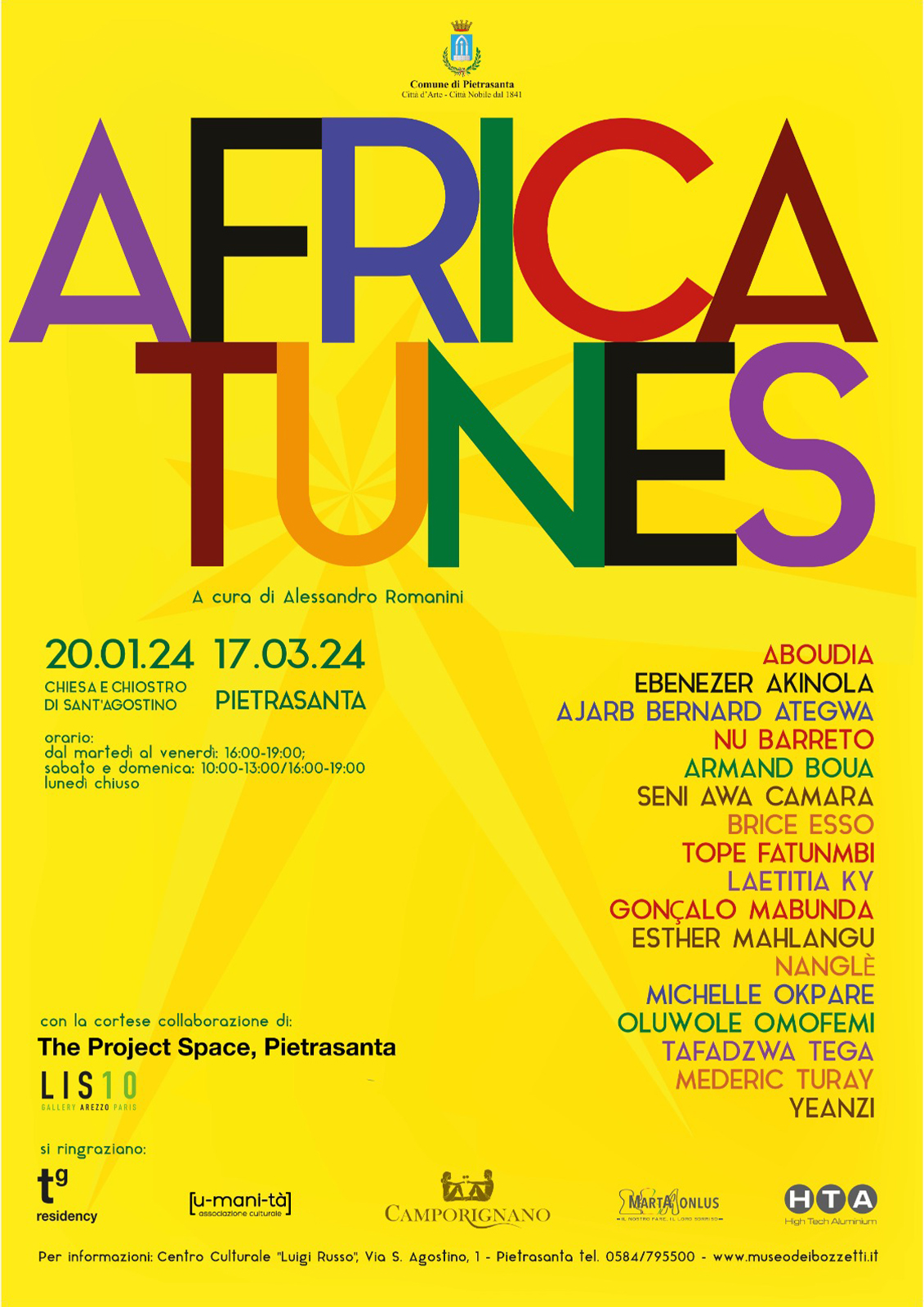
"Africa Tunes" is the title of the group exhibition that opens Saturday 20 January - opening at 6 p.m. - in Pietrasanta (Lu) in the Church and Cloister of Sant'Agostino curated by Alessandro Romanini and produced by The Project Space gallery, Lis10 Gallery and co-organised with the Municipality of Pietrasanta. The exhibition will remain open until 17 March 2024.
A group of 17 African artists, belonging to the last two creative generations, show us with their works - painting, sculpture and photography - how Africa is no longer a continent disconnected from the international geo-cultural and socio-political map, but that it has even become a protagonist at the top of the world creative debate from music to cinema, from fashion design to literature, to the visual arts where by now creatives of the various disciplines play a leading role in biennials, art fairs, auctions, museums and foundations. Beyond this, there are the conflicts that are plaguing our times, the equality of rights, race, gender, religion and culture. Themes made even more cogent in relation to a double anniversary that makes the reflection triggered by the exhibition even more pertinent. In 1994, in fact, one of the most dramatic genocides humanity has ever witnessed took place, that of Rwanda.
A few weeks later, the first elections with universal suffrage, without racial discrimination, were held in South Africa, electing Nelson Mandela President. Younger artists who experienced these events at close quarters are thus confronted with those who were culturally formed in the context of the colonial independence gained in the 1960s and who carried on an identity claim after colonisation.
The exhibition starts in the churchyard of St. Augustine's Church with a sculpture by the Ivorian Brice Esso, an artist who fuses African themes with the technical tradition of Italian Renaissance plastic art, and then enters the church with the works of another Ivorian: Aboudia. These are works with an unmistakable style borrowed from the expressive forms with which the street children in Abidjan - almost always the protagonists of his paintings - "decorated" the walls of the city, animating them with status symbols, televisions, self-portraits and "statements", the only way to bear witness to their existence. In the other rooms of the exhibition venue we encounter the works of Esther Mahlangu representing South Africa, standard-bearer of the centuries-old Ndebele style of painting, which testify to her political and social commitment: from the defence of childhood, to environmental sensitivity among others, passing through the claims of gender rights.
The magical, ritualistic attitude to art, as well as the desire to keep alive the artistic identity tradition of the roots, reworked in a harmonious formula that links it to contemporary international iconography, are the themes in the works of Mederic Turay based in Marrakech, Ajarb Bernard Ategwa (Cameroon), Tope Fatunmbi, Ebenezer Akinola and Oluwole Omofemi (Nigeria), Tafadzwa Tega (Zimbabwe), Nu Barreto (Guinea Bissau) and the very young Ivorian Nanglè. We then find internationally renowned artists who took part in the last Venice Biennale such as the Ivorians, Armand Boua, Yeanzi and Laetitia Ky, the latter of whom has succeeded in creating a language that fuses body art and photography that is perfectly matched to a relentless activism for women's rights. Along similar lines is the young Nigerian artist Michelle Okpare, who proposes ethnic colour patterns that represent expressive alphabets of a non-verbal language. And the Senegalese Seni Awa Camara, already present at the epoch-making exhibition Magiciens de la Terre in 1989 in Paris, with her terracotta sculptures with ritual and identity values, while Mozambican Gonçalo Mabunda, testifies with his sculptures composed of war remnants, to the thaumaturgic power of art, its ability to transform scars into poetry and a warning.